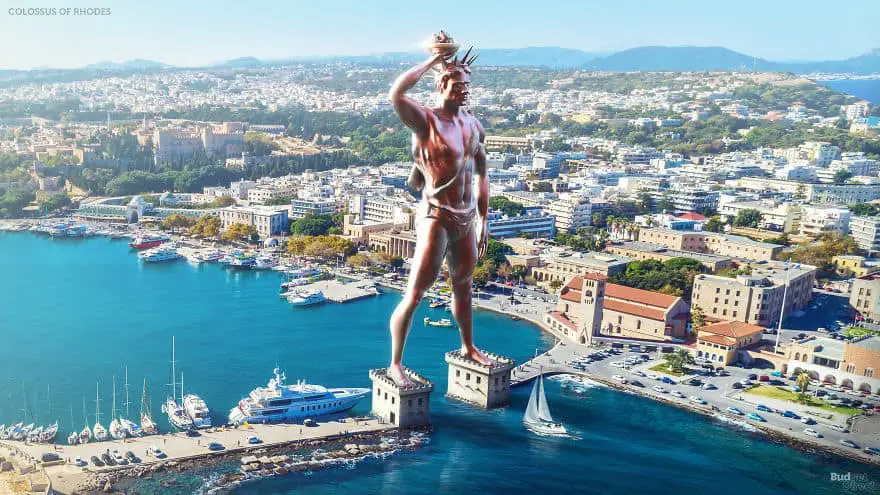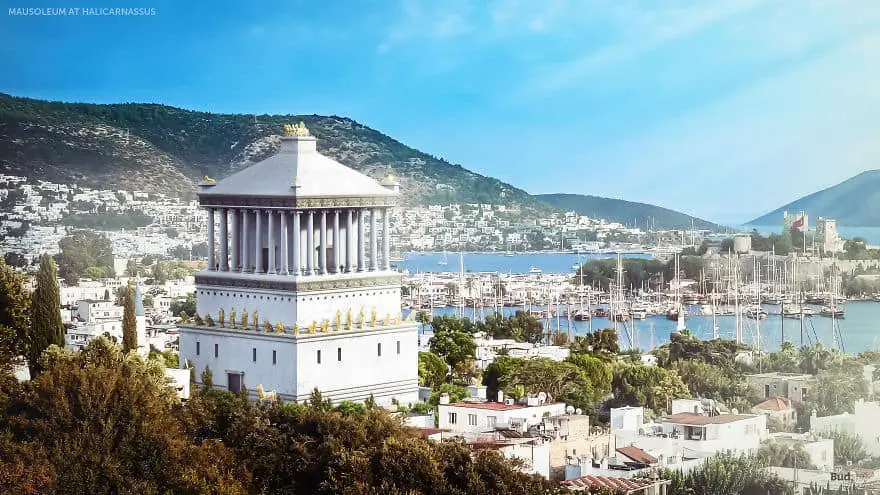This is how the Seven Wonders of the Ancient World appeared in their prime

What is the first thing you do when you have a love for travel or the desire to travel around the world? Maybe go to one of the thousands of websites available on the web to get tips, some interesting facts and traveler photos of those places. Back in those days things were not so easy, people had to find out everything by themselves and sharing their experience on social media was not an option either. Ancient tourists turned to practical advice when it came to what beautiful sights to see.
We find mention of the greatest examples of human ingenuity, amazing architecture, and engineering genius done by man in the writings of several Hellenic authors and poems in the first and second centuries BC. And although most of the Seven Wonders of the World are in tatters, they still inspire accomplished artists to use their imagination and bring the intangible relics of Earth's early civilizations to life.
That's why a company, Budget Direct, decided to give fans of modern culture a chance to visit the majestic ancient structures through a series of photo-realistic 3D presentations with a lifelike view of what the Seven Wonders would have looked like at their best. The result is seven beautifully animated reconstructions that bring these unique structures to life before your very eyes.
1. Colossus of Rhodes

The Colossus was a towering 31-meter tall victory statue of the Greek sun god Helios. It was built over the port of Mandraki in the Greek city of Rhodes on 15-meter marble bases that allow ships to pass between its legs. The Rhodians built the statue from the melted remains of the arsenal of the newly defeated Cypriot army.
The Colossus of Rhodes, a symbol of unity, was carved over twelve years beginning in 304 BC by Chares of Lindos. Unfortunately, despite its massive size, the marvel could not withstand a powerful earthquake after 56 years. The statue remained in its condition for nearly a thousand years until after the Arab invasion, when the Muslim caliph Muawiyah melted it down and sold it as scrap.
2. The Great Pyramid of Giza

The Great Pyramid of Giza held the record for being the tallest man-made structure in the world for over four thousand years until the 19th century when modern humans were able to build something even higher.
The 146-meter-high pyramid was built on 13 acres as a tomb for the Egyptian pharaoh Khufu in 2560 BC. This largest and most impressive structure, consisting of 2.3 million stone blocks, required 100,000 skilled Egyptians and years of hard work to complete. For modern tourists, this is the only remaining ancient wonder among the ancient wonders.
3. Statue of Zeus

This 13-meter-high masterpiece is the statue of Zeus, the god of thunder. Built in Olympia, the wooden structure depicts the god of thunder on a throne, however, it has not stood the test of time.
This statue was built as an attempt to conquer the Athenians, but it did not shine for long. The wooden frame and cedar throne were destroyed in AD 426, and the rich decorations of gold, ivory, ebony, and precious stones, presumably stolen, disappeared.
4. Temple of Artemis in Ephesus

This temple was a tribute to the Greek goddess of chastity, hunting, wild animals, forests, and fertility, Artemis. Perhaps its dazzling beauty was the source of its problems, as it was built and destroyed three times. He was the Greek arsonist (Herostratus) in the beginning, who sought to arson the temple for the sake of fame; then the Goths, who destroyed the city as they left it; Finally, in AD 401, the Christians left behind the foundations and a single column that can still be visited today in Turkey.
5. The Lighthouse of Alexandria

The colossal Lighthouse of Alexandria, commissioned by Ptolemy I, was built in 300-280 BC by the Greek engineer (Sostratus of Cnidus). It is believed to be the first lighthouse in the world, so it was the beacon of architecture for other lighthouses.
The impressive 100-meter-high building houses a blazing fire atop a three-tiered structure: a square level at the bottom, an octagonal level in the middle and a cylindrical top, to which humans can face the sea. The lighthouse was destroyed after an earthquake in the 15th and late 15th centuries and was turned into a medieval castle by the Mamluk sultan (Qaitbay).
6. The Hanging Gardens of Babylon

There is some speculation as to whether this marvel was really built in real life or just a fantasy, but it sure would be quite a challenge if this epic 20-meter-tall engineering masterpiece was actually built once in a while.
Legend has it that the Hanging Gardens of Babylon were built near the Euphrates River in present-day Iraq as a gift from Babylonian King Nebuchadnezzar to his wife Amytis, who was homesick for the green mountains of the Middle Empire. This was definitely heaven on earth.
7. Mausoleum of Mausolus

An elaborate tomb built for Mausolus, the king of Karia whose kingdom was located in western Anatolia. So remarkable was this masterpiece that the late ruler's name became a word describing a great funerary monument.
The massive 45-meter-tall mausoleum was built in the Turkish city of Bodrum around 350 BC. White marble was used in the construction of the structure, and historians believe that a large part of its architectural style has Greek, Egyptian and Lycian origins. The shrine gradually fell into disrepair due to several earthquakes in the 13th century.
Source: GreenLemon website

